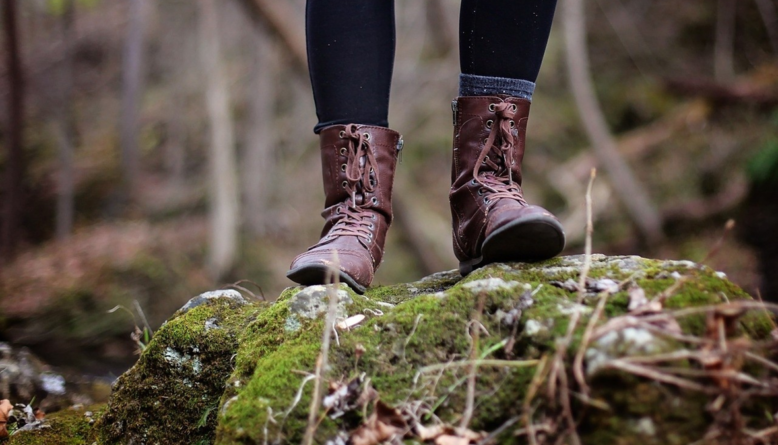As an avid hiker, I know the importance of having the right gear for a successful and enjoyable hiking experience. One of the most important pieces of gear is your hiking boots. The right pair of hiking boots can make all the difference in your comfort and safety on the trail. In this ultimate guide, I will walk you through everything you need to know about choosing the perfect hiking boots for your feet and terrain.
Introduction to Choosing the Perfect Hiking Boots
Before we dive into the details, let’s start with the basics. Hiking boots are designed to provide support, protection, and comfort for your feet while hiking on various terrains. They come in different styles, materials, and features to accommodate different hiking needs and preferences. The key is to find the right pair that fits your feet well, suits your hiking style and terrain, and meets your budget.
Understanding the Types of Hiking Boots
There are three main types of hiking boots: hiking shoes, day hiking boots, and backpacking boots. Hiking shoes are low-cut and lightweight, suitable for short hikes and easy trails. Day hiking boots are mid-cut and more supportive, ideal for day hikes and moderate trails. Backpacking boots are high-cut and heavy-duty, designed for multi-day hikes and challenging terrains. Each type has its pros and cons, so it’s important to choose the right type for your hiking needs.
Assessing Your Hiking Needs and Terrain
When choosing hiking boots, you should consider your hiking needs and the terrain you’ll be hiking on. Ask yourself these questions: How long will your hikes be? What type of trails will you be hiking on? Will you be carrying a backpack? Do you have any foot issues or injuries? The answers to these questions will help you determine the appropriate type and features of hiking boots. For example, if you’re planning to hike on rocky and steep trails, you’ll
need boots with good traction, ankle support, and durable materials. If you’re a beginner or plan to hike on easy trails, you can opt for lighter and more flexible boots.
How to Measure Your Feet for Hiking Boots
Now that you have an idea of what type of hiking boots you need, it’s time to measure your feet. Proper fit is crucial for hiking boots, as ill-fitting boots can cause blisters, soreness, and discomfort. Here’s how to measure your feet for hiking boots:
- Take off your shoes and socks, and stand on a piece of paper.
- Trace the outline of your feet with a pencil or pen.
- Measure the length and width of your feet using a ruler or tape measure.
- Use the measurements to determine your shoe size according to the sizing chart of the hiking boots brand you’re interested in.
It’s important to measure both feet, as they may have different sizes. Also, consider the shape of your feet, such as the arch, width, and volume, as some hiking boots are designed for specific foot shapes.
Tips for Trying on Hiking Boots
Once you have your measurements and a list of potential hiking boots, it’s time to try them on. Here are some tips for trying on hiking boots:
- Wear the socks you plan to wear while hiking.
- Try on boots in the afternoon or evening when your feet are slightly swollen.
- Walk around in the boots for at least 15 minutes to test their comfort and fit.
- Test the boots on a slope or stairs to feel the ankle support.
- Make sure there’s enough space in the toe box for your toes to wiggle and flex.
Remember that hiking boots may feel stiff and snug at first, but they should not cause any pain or pressure points. If you’re unsure about the fit, ask a salesperson or a hiking expert for advice.
Features to Look for in Hiking Boots
Now that you have tried on some hiking boots and have a better idea of your fit and preferences, let’s look at the features that make hiking boots functional and durable. Here are some features to look for in hiking boots:
- Outsole: The outsole is the bottom part of the boot that makes contact with the ground. It should have good traction and grip for various terrains, such as rocky, muddy, or snowy. Look for boots with deep lugs, durable rubber, and non-slip materials.
- Midsole: The midsole is the layer between the outsole and the insole that provides cushioning and support. It should be flexible enough to allow natural foot movement, but firm enough to absorb shock and protect your feet from sharp objects. Look for boots with EVA, polyurethane, or other foam materials that offer a balance of comfort and stability.
- Upper: The upper is the top part of the boot that covers your feet and ankles. It should be made of breathable and waterproof materials, such as leather, synthetic, or Gore-Tex, depending on your hiking needs and climate. Look for boots with reinforced toe caps, padded collars, and adjustable laces for added protection and comfort.
- Insole: The insole is the removable cushioning inside the boot that supports your arch and absorbs moisture. It should be replaceable and customizable to fit your foot shape and support needs. Look for boots with removable and washable insoles, or consider buying aftermarket insoles for better comfort and support.
- Fit: We’ve already discussed the importance of fit, but it’s worth mentioning again. The perfect hiking boot should fit snugly around your heel and midfoot, with enough room for your toes to move and flex. It should also have adequate ankle support without rubbing or constricting your ankles.
Common Mistakes to Avoid When Choosing Hiking Boots
Choosing hiking boots can be overwhelming, especially for beginners. Here are some common mistakes to avoid when choosing hiking boots:
- Buying online without trying on: While online shopping is convenient, it’s risky when it comes to hiking boots. You can’t feel or try on the boots before buying, which increases the chance of getting ill-fitting or unsuitable boots.
- Focusing on style over function: Hiking boots come in different styles and colors, but don’t let that distract you from their function. Always prioritize the features that match your hiking needs and terrain, even if it means sacrificing some aesthetics.
- Assuming your shoe size: Shoe sizes can vary between brands and even between different models of the same brand. Always measure your feet and refer to the sizing chart of the brand you’re interested in.
- Neglecting to break in the boots: Hiking boots may need some breaking in before they feel comfortable and flexible. Wear them around the house or on short walks before hitting the trails.
- Overlooking care and maintenance: Hiking boots can last for years if you take care of them properly. Regularly clean them, waterproof them, and store them in a dry and cool place to prevent damage and odor.
Top Hiking Boot Brands to Consider
There are dozens of hiking boot brands out there, each with its own strengths and weaknesses. Here are some popular hiking boot brands to consider, based on their quality, durability, and customer reviews:
- Salomon
- Merrell
- Vasque
- Lowa
- Keen
- Danner
- La Sportiva
- Scarpa
- Oboz
- Columbia
Of course, this is not an exhaustive list, and you should always do your own research and try on different brands to find your perfect match.
Related Article: 7 Trail Running Shoes for San Diego Hikes: Find Your Perfect Fit
How to Care and Maintain Your Hiking Boots
Once you have found your ideal hiking boots, you want to make sure they last for as long as possible. Here are some tips for caring for and maintaining your hiking boots:
- Clean them after each hike: Use a soft brush or cloth to remove dirt, mud, and debris from the boots. Avoid using harsh chemicals or hot water, as they can damage the materials.
- Waterproof them regularly: Apply a waterproofing spray or wax to the boots to prevent water and moisture from seeping in. Follow the instructions of the product and reapply as needed.
- Store them properly: Keep the boots in a dry and cool place, away from direct sunlight and heat. Stuff them with newspaper or a boot tree to maintain their shape and absorb moisture.
- Repair them when needed: Don’t wait until your boots fall apart to fix them. If you notice any damage or wear, such as a loose seam or a worn-out sole, take them to a professional cobbler or use a DIY repair kit.
- Replace them when necessary: Hiking boots can last for hundreds of miles, but they do wear out eventually. If you notice that your boots no longer provide adequate support, traction, or cushioning, it’s time to replace them.
Conclusion and Final Tips for Choosing the Perfect Hiking Boots
Choosing the perfect hiking boots may seem daunting, but with the right knowledge and preparation, it can be a rewarding and enjoyable process. Remember to assess your hiking needs and terrain, measure your feet, try on different boots, and prioritize functionality over style. Look for features such as a sturdy outsole, a supportive midsole, a breathable and waterproof upper, a comfortable insole, and a snug fit. Avoid common mistakes such as buying online without trying on, neglecting to break in, or overlooking care and maintenance. Consider top hiking boot brands such
as Salomon, Merrell, Vasque, Lowa, Keen, Danner, La Sportiva, Scarpa, Oboz, and Columbia, but always try on different brands to find your perfect fit. With these tips, you’ll be ready to conquer any trail with confidence and comfort.
Related Article: 5 Top Hiking Boots for Your Yosemite Adventure On Amazon
CTA
Now that you know how to choose the perfect hiking boots, it’s time to hit the trails! Don’t forget to share this guide with your hiking buddies and check out our website for more hiking tips and gear recommendations. Happy hiking!



No Responses Yet